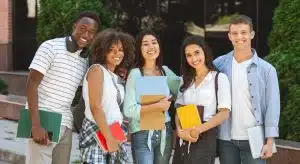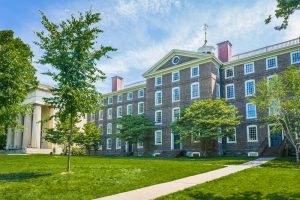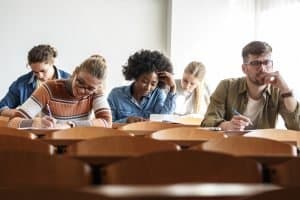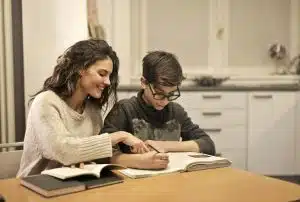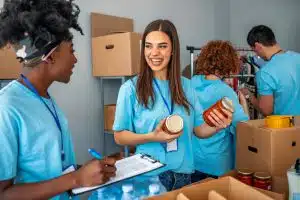How Big Is Berkeley? An Overview of the City’s Size and Population
Located on the eastern shore of San Francisco Bay, Berkeley is known for its vibrant culture, academically driven environment and progressive policies. But how big is this city, both in terms of geographic size and population? This article will look into an overview of Berkeley’s physical dimensions and demographic data, and provide a comparison with other cities. This article will also discuss how its size and population density influence the everyday lifestyle of Berkeley.
Understanding Berkeley’s Geographic Size
In terms of land area, the city of Berkeley is about 17.7 square miles. With its diverse landscape, the city encompasses a low-lying shoreline to the west and rises to meet the Berkeley Hills in the east. This unique topography makes the city a remarkable blend of varied ecological zones.
When exploring Berkeley’s land area, it becomes evident that every inch has been maximized to its full potential. The city’s 17.7 square miles are carefully divided into a mix of residential areas, commercial zones, industrial regions, and plenty of parks and open spaces. The local government agencies have taken great care in planning and developing the city, ensuring that there is a delicate balance between urbanization and ecological conservation.
Each neighborhood in Berkeley exudes a unique character, contributing to the city’s vibrant tapestry. Whether it’s the historic charm of Elmwood, with its tree-lined streets and beautiful Victorian homes, or the bustling atmosphere of Downtown Berkeley, with its lively shops and restaurants, each area tells its own story. The residential peace of the Claremont District, nestled against the backdrop of the Berkeley Hills, offers a tranquil retreat for those seeking a serene living environment. This diversity of neighborhoods is a testament to the city’s ability to harness its geographic size without losing its distinct narrative.
Water Bodies within Berkeley
It’s essential to note that Berkeley’s geographic size isn’t just about landmass, but also bodies of water. The city sits on the stunning San Francisco Bay shoreline, providing breathtaking views and various recreational opportunities for residents. The Berkeley Marina, a vibrant waterfront destination, is a prime example of the city’s connection to the water. Spanning 52 acres, the marina offers a picturesque park, a 1,100-berth marina, and the popular Adventure Playground, where children can let their imaginations run wild.
In addition to the San Francisco Bay, Berkeley is blessed with several creeks that meander through residential neighborhoods and parks. Strawberry Creek, with its gentle babbling waters, adds a touch of serenity to the city. Codornices Creek, known for its lush vegetation and wildlife, provides a natural oasis for both humans and animals alike. Schoolhouse Creek, with its charming footbridges and tranquil surroundings, invites residents to take leisurely strolls along its banks, offering a moment of respite from the urban bustle.
There is also Lake Anza, a hidden gem nestled in the Berkeley Hills. This picturesque lake, surrounded by towering trees and lush greenery, is a favorite among locals for its picnic areas and swimming opportunities. Whether it’s a family gathering or a peaceful afternoon spent lounging by the water’s edge, Lake Anza offers a serene escape from the city’s hustle and bustle.
Berkeley’s Population Density
With a population of approximately 122,000 residents, Berkeley’s population density is around 6,900 people per square mile. This may seem dense in comparison to many other U.S cities, but it’s a number that has emerged due to several factors that this article will explore.
Population Growth Over the Years
Over the decades, Berkeley has seen a steady increase in its population. Robust economic opportunities, proximity to San Francisco, and the attraction of world-class higher education are some factors that have contributed to this growth. The city’s strategic management of this growth has ensured sustainable development, balancing the influx of new residents with the preservation of Berkeley’s unique character.
Moreover, the city’s ability to adapt to demographic changes and create a harmonious multicultural environment has further fueled its desirability as a destination for people with diverse backgrounds. The city’s rich history of activism and progressive values has attracted individuals who seek a community that values social justice and equality.
Population Distribution across Neighborhoods
The population in Berkeley isn’t evenly distributed across its neighborhoods. Higher population densities are typically seen in areas surrounding the University of California, Berkeley, and downtown areas where student populations are concentrated. These areas buzz with energy, offering a vibrant mix of cultural events, restaurants, and nightlife.
Families and older adults, on the other hand, usually prefer quieter residential neighborhoods like the Claremont District or North Berkeley. These areas provide a more serene atmosphere, with tree-lined streets and parks, making them ideal for raising children or enjoying a peaceful retirement.
The city’s community planning has always strived to cater to the needs of these different population segments while maintaining connectivity and accessibility for all residents. Berkeley’s public transportation system, including buses and BART (Bay Area Rapid Transit), ensures that residents can easily navigate the city and reach their desired destinations.
Furthermore, Berkeley’s commitment to sustainability is reflected in its urban planning. The city has implemented policies to encourage the use of bicycles and promote walkability, reducing reliance on cars and minimizing the environmental impact of transportation. This focus on sustainability not only benefits the environment but also contributes to a healthier and more active lifestyle for residents.
In conclusion, Berkeley’s population density is a result of various factors, including economic opportunities, proximity to San Francisco, and the presence of a renowned university. The city’s strategic management of growth and its ability to cater to the diverse needs of its residents have contributed to its desirability as a place to live. Whether one seeks an energetic urban lifestyle or a peaceful residential community, Berkeley offers a range of neighborhoods to suit different preferences.
The Role of Universities in Berkeley’s Size
One cannot talk about Berkeley’s size and population without acknowledging the role of higher educational institutions, particularly the University of California, Berkeley.
University of California, Berkeley: A Significant Contributor
With a sprawling campus spread out over 1,232 acres, the University of California, Berkeley, contributes significantly to Berkeley’s land area. The campus itself is a vibrant hub of activity, with numerous buildings, libraries, and research facilities dotting the landscape. The iconic Campanile, standing tall at 307 feet, serves as a symbol of the university’s rich history and academic excellence.
Movements of more than 40,000 students and nearly 15,000 faculty and staff members create a substantial impact on the city’s population fluctuation throughout the year. As the university operates on a semester system, the population of Berkeley experiences noticeable shifts during the start and end of each academic term. The influx of students from various parts of the world brings a diverse range of perspectives and cultures to the city, enriching its social fabric.
Furthermore, the university’s reputation as a global academic powerhouse has been a major factor in attracting domestic and international students, thereby contributing to population growth over the years. Students from all corners of the globe flock to Berkeley to pursue their educational aspirations, drawn by the university’s renowned faculty, cutting-edge research opportunities, and vibrant intellectual community.
Other Educational Institutions in Berkeley
While the University of California is undeniably a significant part of Berkeley’s urban landscape and demographic, other educational institutions also play a role in shaping the city’s size and character.
Berkeley City College, located in the heart of downtown Berkeley, offers a wide range of academic programs and serves as a vital resource for the local community. Its presence adds to the intellectual vibrancy of the city, attracting students from diverse backgrounds who seek to further their education and contribute to the growth of Berkeley.
The Graduate Theological Union, a consortium of theological schools and centers, brings together scholars and students from various religious traditions. This unique institution fosters interfaith dialogue, research, and education, making Berkeley a hub for theological studies and religious diversity.
Zaytuna College, the first accredited Muslim liberal arts college in the United States, is another noteworthy institution in Berkeley. It offers a comprehensive curriculum that combines classical Islamic sciences with a liberal arts education, attracting students who seek a holistic approach to their academic journey.
The existence of these educational institutions not only adds to the intellectual vigor of the city but also implies a consistent influx and exit of populations. Students come and go, pursuing their educational goals and contributing to the local economy and cultural landscape. This dynamic nature demands flexible urban planning to accommodate the ever-changing demographic dynamics and ensure that Berkeley remains a thriving academic and cultural center.
Comparing Berkeley’s Size and Population to Other Cities
In comparison to other cities, Berkeley packs a lot of punch into its relatively small geographic area, both in terms of population and cultural, intellectual, and ecological richness.
Located in the heart of the San Francisco Bay Area, Berkeley is a city that thrives on its unique blend of history, innovation, and diversity. With its vibrant neighborhoods, world-renowned university, and stunning natural landscapes, Berkeley offers a quality of life that is hard to match.
Berkeley vs. Other California Cities
Despite its modest size, Berkeley is more densely populated than many other Californian cities, including the sprawling Los Angeles. While this does present challenges, it also speaks of Berkeley’s vibrancy and the community’s ability to live in proximity without compromising the city’s charm.
Walking through the streets of Berkeley, one can’t help but notice the energy that permeates the air. The city is alive with the hustle and bustle of students, artists, and entrepreneurs, all contributing to the vibrant atmosphere that sets Berkeley apart.
Furthermore, considering its population, Berkeley balances urbanization and preservation quite impressively when compared to other cities. A testament to this is the city’s emphasis on open spaces and maintaining its rich ecology amidst urban expansion.
From the iconic Tilden Regional Park, with its sprawling meadows and majestic redwood trees, to the Berkeley Marina, where residents can enjoy stunning views of the San Francisco skyline, Berkeley offers a sanctuary of nature within its urban landscape.
Berkeley in the National Context
When compared nationally, Berkeley holds its own against much larger and more populous cities. Ranking within the top 75 cities by population, Berkeley strikes a fine balance between a bustling city and a close-knit community.
While other cities may boast skyscrapers and endless concrete, Berkeley stands as a testament to the power of community and the importance of preserving the environment. The city’s commitment to sustainability is evident in its numerous green initiatives, bike-friendly streets, and locally sourced food options. This blend of urbanization and community spirit, along with a strong academic environment and progressive ethos, makes Berkeley stand out in the national context.
From the Free Speech Movement of the 1960s to the groundbreaking advancements in technology and science, Berkeley has been at the forefront of social and intellectual progress. The city’s rich history and forward-thinking mindset continue to shape its identity and contribute to its national significance.
The Impact of Berkeley’s Size and Population on City Life
The size and population of Berkeley undeniably influence the lifestyle within the city. From housing choices to urban infrastructure, every aspect of city life is intertwined with these elements.
Housing and Real Estate in Berkeley
Berkeley’s housing scene is vibrant, with architectural styles ranging from Victorian to modern, and configurations varying from single-family homes to multiple-unit complexes. However, the high population density has also led to a competitive real estate market, with housing prices typically higher than the national average.
Dense neighborhoods often have creative solutions like co-housing communities and student accommodations. Additionally, policy initiatives focus on building more affordable housing to cater to the diverse population’s needs.
Transportation and Infrastructure in a Densely Populated City
Transportation in Berkeley is impacted by its population density. The city’s public transportation system, managed by the AC Transit, BART, and the University of California, Berkeley’s Bear Transit, is efficient and well-utilized.
Given the city’s density, residents often prefer to walk, cycle, or use public transport, making Berkeley one of the cities with the highest percentage of residents who do not drive. The city’s infrastructure facilitates this with well-designed cycling routes, pedestrian-friendly policies, and traffic calming measures.
In conclusion, Berkeley’s size and population, though modest compared to other prominent cities, make it no less significant. Its unique combination of physical dimensions, population distribution, and the high-density lifestyle it supports create a rich tapestry for the Berkeley experience, making it a compelling city to study, learn from, and live in.




